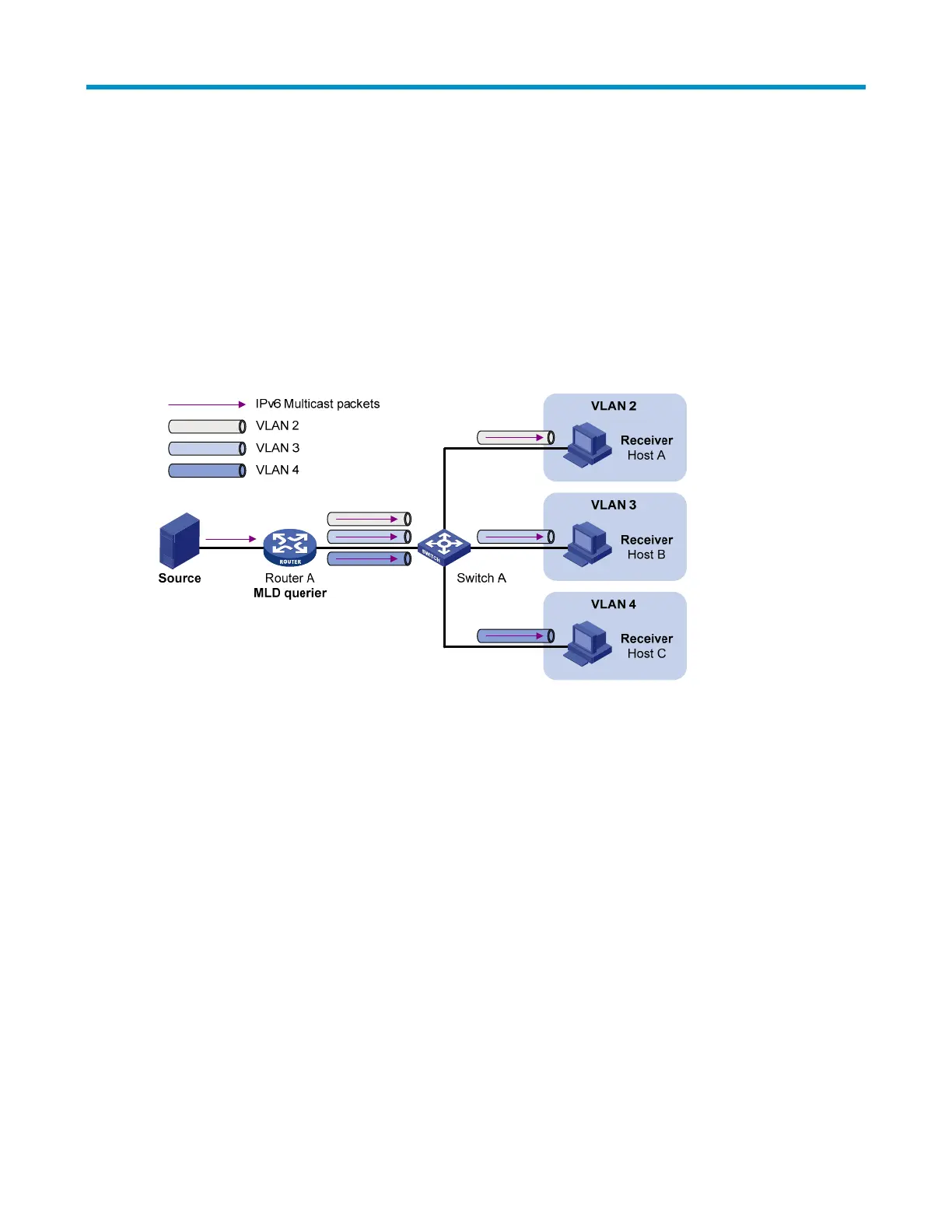280
IPv6 multicast VLAN configuration
IPv6 multicast VLAN overview
As shown in Figure 71, in the traditional IPv6 multicast programs-on-demand mode, when hosts—Host
A, Host B, and Host C—which belong to different VLANs require IPv6 multicast programs-on-demand
service, the Layer 3 device—Router A—must forward a separate copy of the multicast traffic in each user
VLAN to the Layer 2 device, Switch A. This results in not only waste of network bandwidth but also extra
burden on the Layer 3 device.
Figure 71 Multicast transmission without IPv6 multicast VLAN
The IPv6 multicast VLAN feature configured on the Layer 2 device is the solution to this issue. With the
IPv6 multicast VLAN feature, the Layer 3 device needs to replicate the multicast traffic only in the IPv6
multicast VLAN instead of making a separate copy of the multicast traffic in each user VLAN. This saves
network bandwidth and lessens the burden on the Layer 3 device.
The IPv6 multicast VLAN feature can be implemented by the following approaches: sub-VLAN-based
multicast VLAN and port-based multicast VLAN.
Sub-VLAN-based IPv6 multicast VLAN
As shown in Figure 72, Host A, Host B and Host C are in different user VLANs. On Switch A, configure
VLAN 10 as an IPv6 multicast VLAN, configure all user VLANs as sub-VLANs of VLAN 10, and enable
MLD snooping in the IPv6 multicast VLAN.
